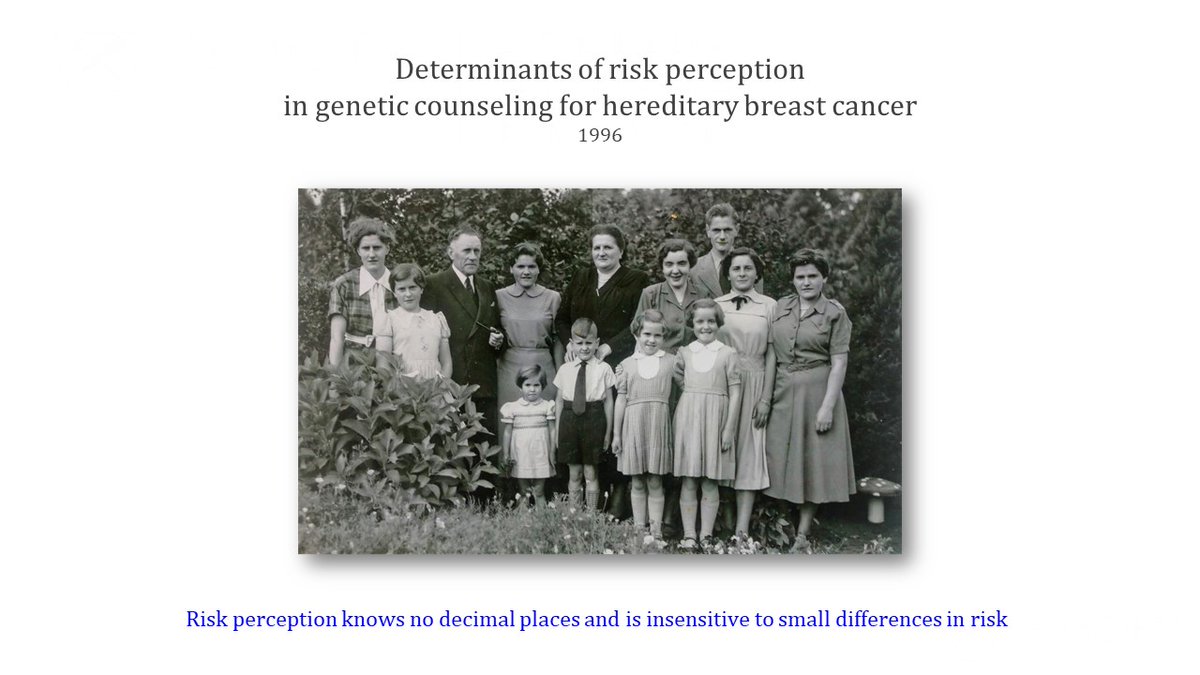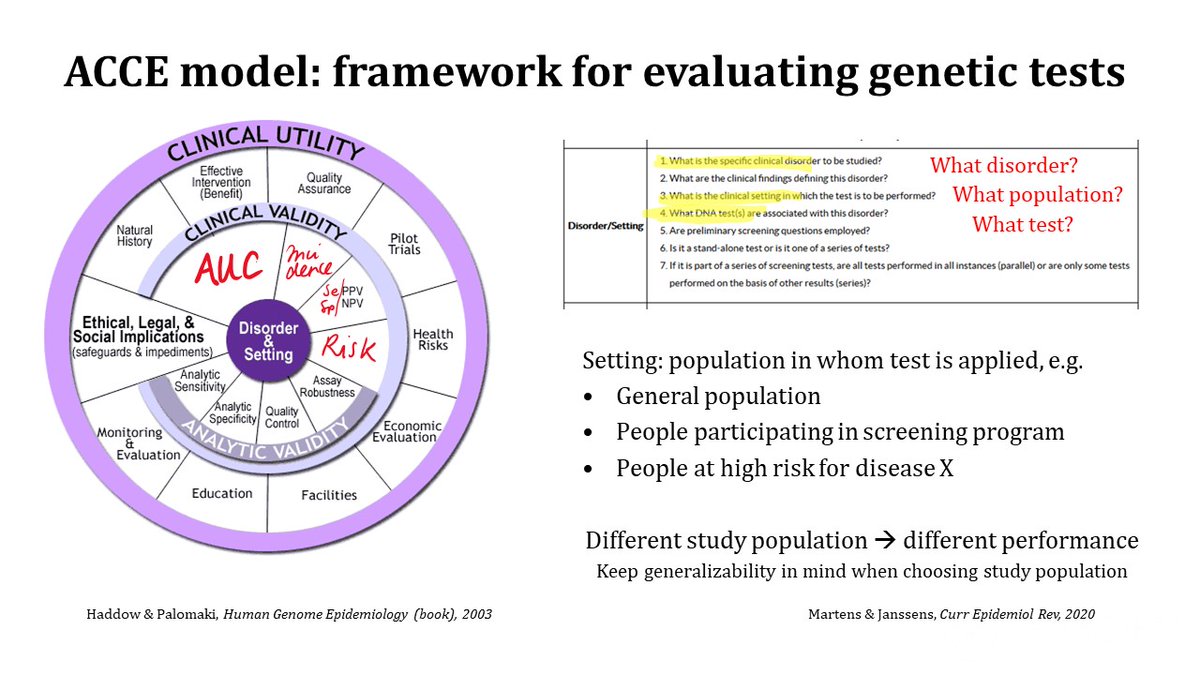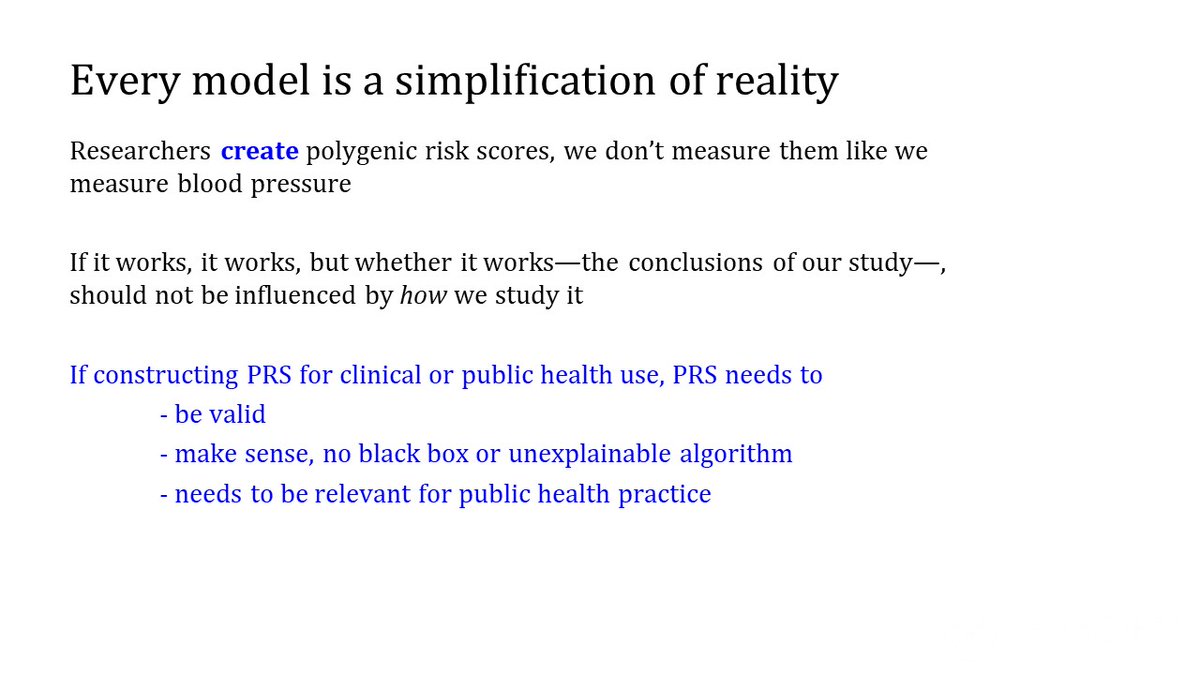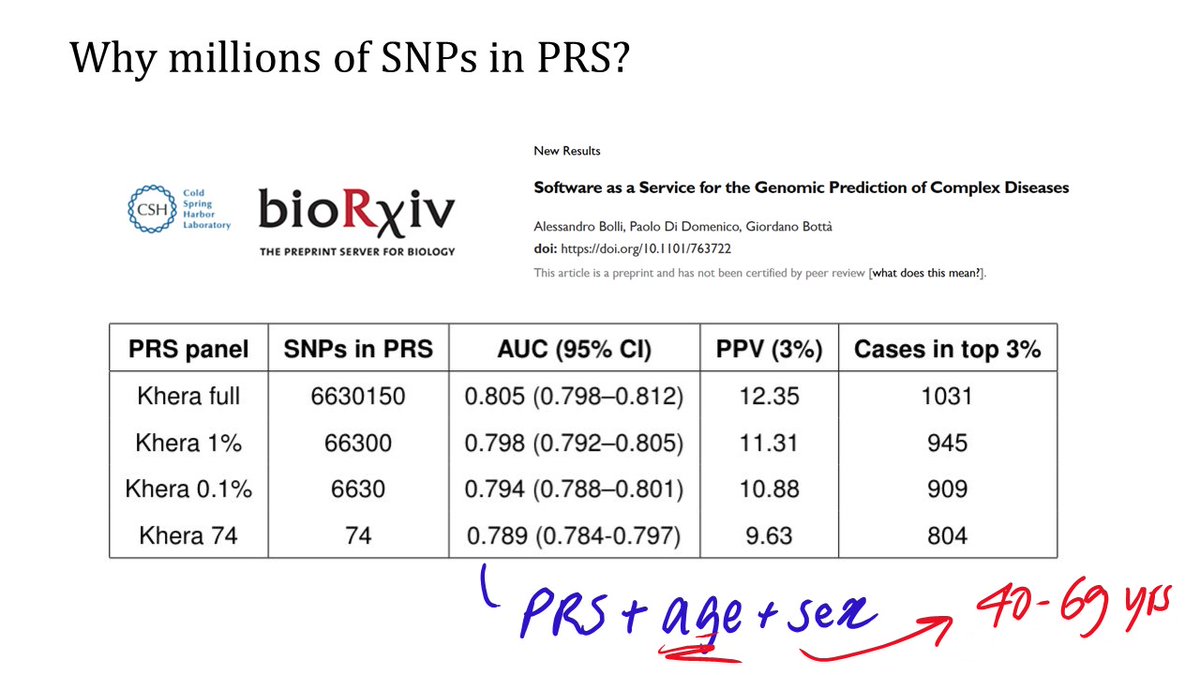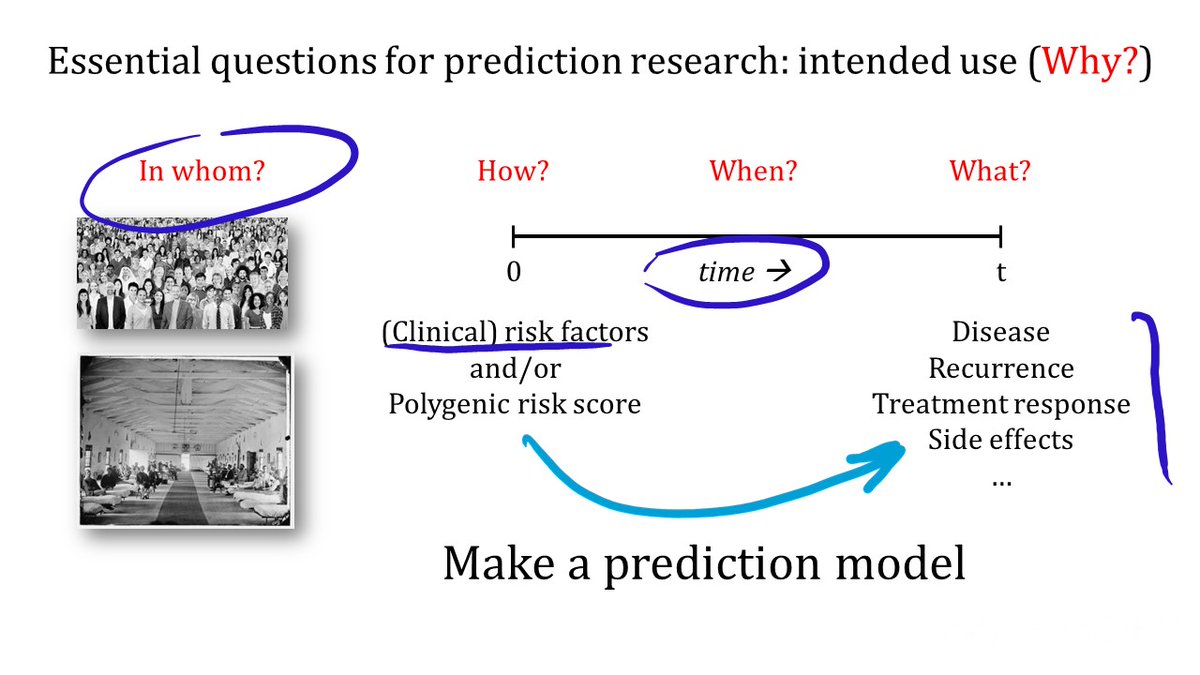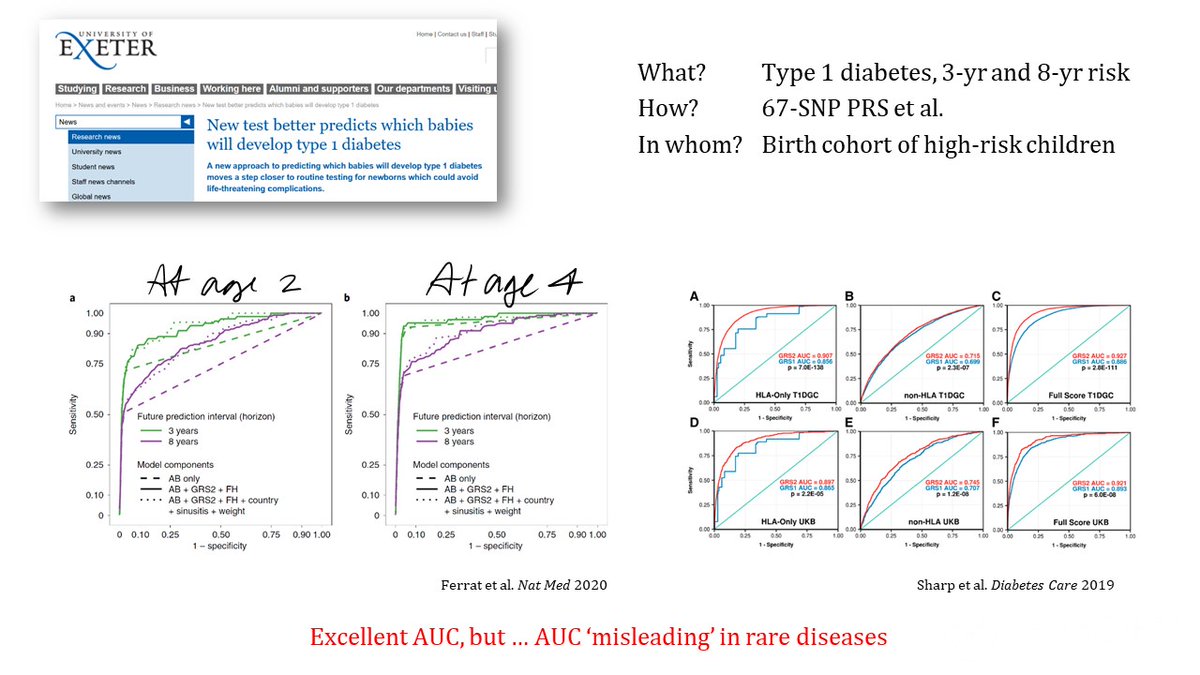Here is a quick summary of my webinar on polygenic risk scores (PRS), hosted by @CDC_Genomics and @MuinJKhoury. A link to all slides and recording is in the last tweet.
The lecture was about PRS, public health, utility, and getting the science right.
1/18
The lecture was about PRS, public health, utility, and getting the science right.
1/18
A personal intro: My first work on genetic risk was my MA thesis on why some women perceive their risks of hereditary BC so high that they choose preventive surgery.
This is my family. My mom & grandmom died of BC too young. That& #39;s what my aunts wanted to prevent, at high cost.
This is my family. My mom & grandmom died of BC too young. That& #39;s what my aunts wanted to prevent, at high cost.
If we really want to use PRS for screening, it should, like other screening tests, be strongly associated with a disease. Statistical significance is not enough. Ultimately utility is all that matters.
EGAPP and ACCE laid out the framework for how to evaluate genetic tests. Crucial is that this evaluation varies with disorder and setting: if PRS is applied in a different population, the predictive performance (clinical validity) may differ.
Here& #39;s a nice illustration of that: one clinical risk model and PRS applied in 5 different populations yielded very different AUC. If you doubt the relevance of AUC, check here: https://twitter.com/cecilejanssens/status/1104134423673479169">https://twitter.com/cecilejan...
Then a note about the modeling. PRS does not & #39;exist& #39;, it& #39;s constructed. As long as we have nothing better, we take the weighted sum as the best way to model the complex underlying dynamics. Which is fine ...
... as every model is a simplification. If it works, then it works.
But if we want to use it in public health practice, then it needs to make sense, we can& #39;t ask people to change behavior on a black box or hard-to-explain algorithm.
But if we want to use it in public health practice, then it needs to make sense, we can& #39;t ask people to change behavior on a black box or hard-to-explain algorithm.
Thus, we need to find a good explanation for why many studies find that PRS is independent. If many of the SNPs in the PRS predispose clinical risk factors, then I don& #39;t believe that independence. Can it be that pooling all SNPs in 1 PRS *creates* independence?
More studies use millions SNPs in PRS. I understand how that is done, but not that it makes sense. The changes in AUC and risks (PPV) are too minimal to expect that these will hold up in practice. Also keep in mind risk communication: how are can we explain 6M PRS to the people?
This is my biggest concern for PRS research on prediction, relating back to the essence of defining disorder and setting: the studies that researchers are generating may not be the evidence that doctors can use to support their decisions. Population selection matters.
This is one of the big differences between epidemiological and prediction research: in prediction research, the choice of study population, predictors, FU time and outcome need to be of relevance for doctors and patients. That& #39;s where most empirical research falls short.
Three recent examples:
1. Type 1 diabetes is a promising example, but a study in a birth cohort of high-risk children is not representative for the baby population.
Same group published more relevant study in 2019, with similar spectacular AUC. With one caveat ...
1. Type 1 diabetes is a promising example, but a study in a birth cohort of high-risk children is not representative for the baby population.
Same group published more relevant study in 2019, with similar spectacular AUC. With one caveat ...
... when disease is rare, AUC needs to be sky high.
Here we see that if 10% of the babies is monitored, 78% of T1D will be detected, but T1D risk in this group is & #39;only& #39; 2%. Babies have 98% chance of no-T1D. Motivating parents to monitor their babies may need higher PPV.
Here we see that if 10% of the babies is monitored, 78% of T1D will be detected, but T1D risk in this group is & #39;only& #39; 2%. Babies have 98% chance of no-T1D. Motivating parents to monitor their babies may need higher PPV.
2. A recent study from Myriad et al. showed that PRS was also associated in women who carry BC mutations (I wonder why it would not).
Variation in risk is an artist impression based on modeling. Big question: will women appreciate more precision? Remember risk perception.
Variation in risk is an artist impression based on modeling. Big question: will women appreciate more precision? Remember risk perception.
3. PRS and clinical risk scores for coronary artery disease. A much studied topic, with a new twist? Clinical risk score and PRS are considered separately, in a two-step screening approach. Why would we do that? Why not combine clinical scores and PRS?
Research on PRS prediction should focus more on the intended use of the score. This determines the study population and the relevance of the results. Generalizability of PRS performance is not only a concern between ethnicities, also within.
Make your research matter!
Make your research matter!
A link to the slides and the recording will be posted here shortly.
Prediction research introduction: http://www.cecilejanssens.org/wp-content/uploads/2018/05/PredictionManual2.1.pdf
/end.">https://www.cecilejanssens.org/wp-conten...
Prediction research introduction: http://www.cecilejanssens.org/wp-content/uploads/2018/05/PredictionManual2.1.pdf
/end.">https://www.cecilejanssens.org/wp-conten...

 Read on Twitter
Read on Twitter
